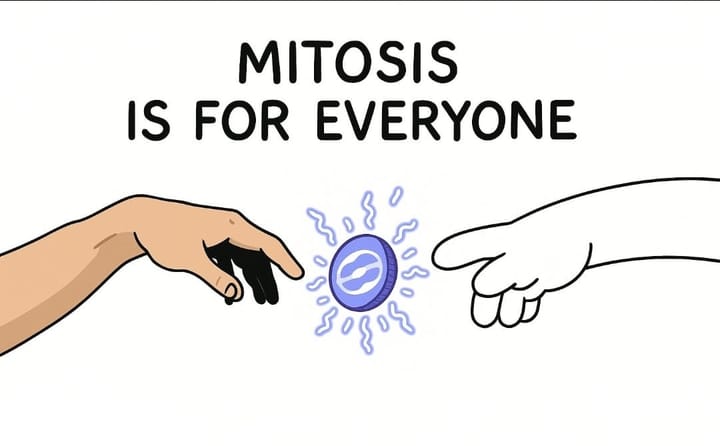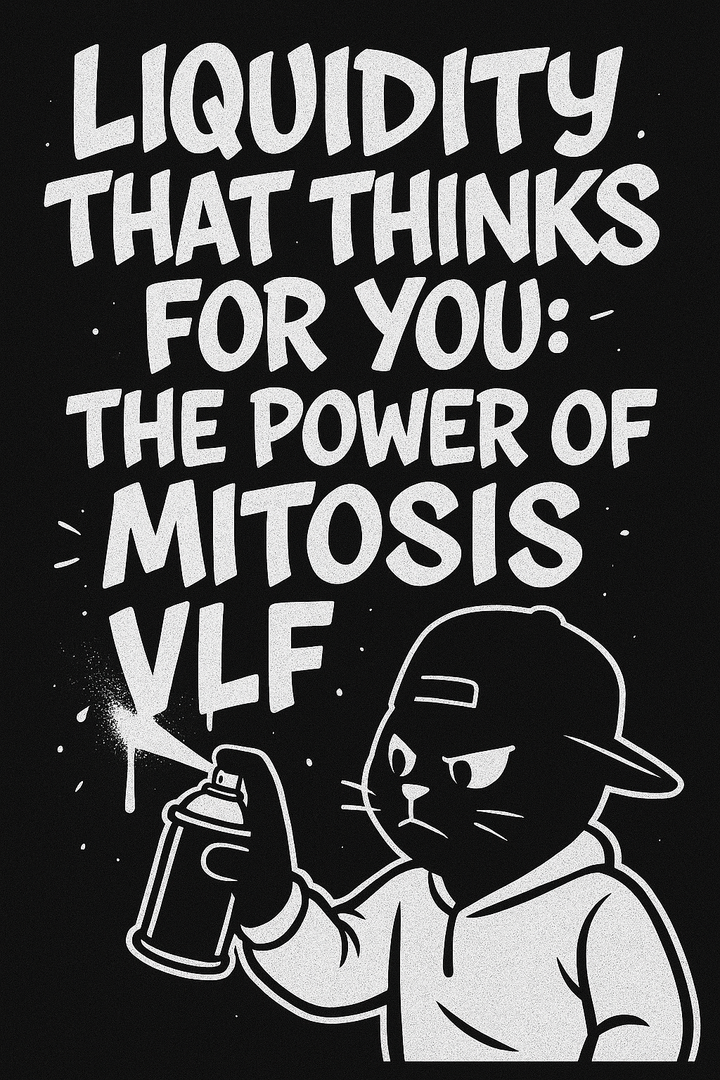Optimizing Yield in a Multi-Chain World with Mitosis

Over $100 billion in total value locked (TVL) has been dispersed across various chains in the DeFi space, leading to inefficiencies such as excessive costs, delayed transactions, and capital traps due to liquidity fragmentation. Mitosis addresses these challenges through its innovative Ecosystem-Owned Liquidity (EOL) model and cross-chain liquidity management, empowering traders to chase yields across modular blockchains like Ethereum, Solana, and Cosmos without the hassles of traditional bridging.
Background on Multi-Chain DeFi and Liquidity Fragmentation
The DeFi ecosystem has grown significantly, with capital flowing into Layer 2 scalability solutions like Arbitrum, monolithic ecosystems like Solana, and emerging modular blockchains powered by Celestia and EigenLayer. As of recent reports, approximately 60% of DeFi TVL remains on Ethereum L1, but the trend toward chain diversification is accelerating, as noted in Introducing Mitosis: The Modular Liquidity Protocol. However, this diversification has led to liquidity fragmentation, where assets are trapped on different blockchains, making it difficult for traders to move and utilize them efficiently. This fragmentation results in missed opportunities, higher transaction fees, and reduced capital efficiency, as highlighted in Cross-Chain Liquidity Management: How Mitosis Unifies DeFi Liquidity.
Mitosis’s Cross-Chain Liquidity Management
Mitosis is designed as an Ecosystem-Owned Liquidity (EOL) layer 1 blockchain, redefining how liquidity is managed in DeFi. Mitosis tokenizes liquidity positions into miAssets—programmable, yield-bearing tokens representing a user’s share in the EOL pool. When traders deposit assets, such as weETH, into Mitosis Vaults, they receive miAssets at a 1:1 ratio. These miAssets can be traded, staked, or used as collateral across different chains, offering unparalleled flexibility.
The key to Mitosis’s cross-chain capability lies in its permissionless interoperability, facilitated by partnerships like Hyperlane. Unlike traditional liquidity bridges that rely on wrapping or locking assets, Mitosis allows liquidity to move natively across chains without the need for manual bridging. For example, a trader can deposit weETH on Ethereum and instantly access its liquidity on Arbitrum or Optimism, as detailed in this article Cross-Chain Liquidity Management: How Mitosis Unifies DeFi Liquidity on Mitosis University. This native movement reduces costs, eliminates slippage, and minimizes fragmentation, enabling traders to deploy their capital where it can generate the highest returns.
Mitosis’s modular liquidity framework, as outlined in Mitosis: Revolutionising DeFi with Programmable and Cross-Chain Liquidity, ensures that liquidity is not siloed but can be dynamically allocated across chains. This is particularly beneficial for traders seeking to chase yields, as it allows them to participate in high-yield opportunities on networks like Solana or Cosmos without the inefficiencies of traditional cross-chain transfers.
Chasing Yields Across Chains: A Unified Approach
Mitosis’s architecture is tailored for yield optimization in a multi-chain environment. By unifying liquidity across chains, Mitosis ensures that traders can access high-yield opportunities without being constrained by the chain on which their assets are deposited. The EOL model pools liquidity from individual providers into a DAO-governed structure, enhancing collective bargaining power and allowing LPs to benefit from economies of scale. As noted in What is Mitosis and How to Earn Points for the Airdrop, EOL simplifies decision-making for retail liquidity providers by unifying yields across different chains, avoiding the hassle of comparing yields across multiple networks.
For instance, if a trader deposits ETH into a Mitosis Vault on Ethereum, they receive miETH, which can be staked or used as collateral on other chains like Avalanche or Solana. Through governance, miETH holders can vote to deploy liquidity to high-yield opportunities on these chains, such as lending protocols or yield farming pools. This dynamic allocation, as explained in the article Mitosis: Revolutionising DeFi with Programmable and Cross-Chain Liquidity, contrasts with traditional DeFi, where liquidity is often static and locked in isolated pools, limiting flexibility.
A case study mentioned in Cross-Chain Liquidity Management: How Mitosis Unifies DeFi Liquidity highlights a hedge fund deploying $100 million in USDC across five chains via Mitosis, demonstrating how the platform enables efficient capital deployment for yield optimization. The platform’s ability to automatically route liquidity to the most efficient chains, as noted in Cross-Chain Liquidity, further enhances capital efficiency, ensuring traders can move assets dynamically to high-yield opportunities.
The Role of Governance in Yield Optimization
Governance is a cornerstone of Mitosis’s yield optimization strategy. miAsset holders are not just passive liquidity providers, but active participants in the ecosystem’s decision-making process. Through periodic gauge votes, miAsset holders can influence how the ecosystem-owned liquidity is allocated across chains and dApps. This participatory approach ensures that liquidity is directed toward high-return opportunities, aligning the interests of LPs with the overall growth of the ecosystem.
For example, if a new DeFi protocol on Cosmos offers attractive incentives, miAsset holders can vote to deploy a portion of the EOL pool to that protocol. This collective decision-making process contrasts with traditional DeFi, where liquidity allocation is often centralized or dictated by protocol operators. By giving LPs a voice, Mitosis ensures that liquidity is managed efficiently and transparently, fostering a more decentralized and community-driven ecosystem.
Moreover, governance extends beyond liquidity allocation. Mitosis plans to introduce cross-chain governance, allowing miETH holders on Ethereum to govern protocols on other chains like Avalanche. This innovation, mentioned in Cross-Chain Liquidity Management: How Mitosis Unifies DeFi Liquidity, further enhances the ability of traders to optimize yields by ensuring that liquidity is deployed strategically across the entire multi-chain ecosystem. The governance process involves forum discussions, signaling proposals, and gauge proposals, all voted on by LPs using their miAssets, as detailed in Ecosystem-Owned Liquidity.
Matrix Vaults: Structured Yield Opportunities
In addition to the EOL model, Mitosis introduces Matrix Vaults, which are curated liquidity campaigns designed to offer premium DeFi opportunities. By participating in Matrix Vaults, traders can lock their assets for fixed terms (e.g., 90 days) and earn maAssets, which provide access to exclusive rewards and high-yield strategies. These vaults are structured to reward long-term commitment, with early withdrawals forfeiting rewards that are redistributed to remaining participants, as explained in Mitosis’s official documentation.
Matrix Vaults exemplify how Mitosis not only unifies liquidity but also creates new avenues for yield optimization. Traders can engage in sophisticated strategies like delta-neutral trading or cross-protocol arbitrage, all within a governed and secure framework. For example, a trader might lock ETH in a Matrix Vault to earn maETH, which can then be used to participate in high-yield opportunities across multiple chains. This structured approach ensures that traders can maximize their returns while maintaining control over their assets, as noted in Mitosis: Revolutionising DeFi with Programmable and Cross-Chain Liquidity.
Security and Scalability: Foundations for Yield Optimization
Mitosis’s security model is another critical factor supporting yield optimization. By leveraging delegated Proof of Stake (dPoS) and integrating with Ethereum restaking, Mitosis ensures that its security scales with the growth of TVL. This trust-minimized approach, as outlined in Hyperlane’s blog, reduces reliance on centralized components, making it a safer platform for cross-chain activities.
Furthermore, Mitosis’s modular design allows it to adapt to the evolving DeFi landscape. Its permissionless interoperability, enabled by Hyperlane, ensures that new chains can be integrated seamlessly, providing traders with access to the latest yield opportunities. As noted in CoinGecko’s overview article What Is Mitosis and How to Earn Points for the Airdrop, Mitosis has already achieved over $80 million in TVL within three months of development, demonstrating its growing importance in the DeFi space. This scalability, combined with its focus on capital efficiency, as mentioned in Mitosis — A solution that transforms the Flow and Growth of Liquidity in DeFi, positions Mitosis as a leader in the modular era of blockchain technology.
Conclusion
Mitosis represents a paradigm shift in DeFi, offering traders a powerful toolkit to optimize yields in a multi-chain world. Through its EOL model, cross-chain liquidity management, and governance-driven allocation, Mitosis empowers traders to build dynamic portfolios that adapt to market conditions and capture the best returns across different blockchains. The role of governance is particularly crucial, as it ensures that liquidity is directed toward high-return opportunities, aligning the interests of all participants with the growth of the ecosystem.
You can keep in touch with MITOSIS by following:
WEBSITE || X (Formerly Twitter) || DISCORD|| DOCS



Comments ()